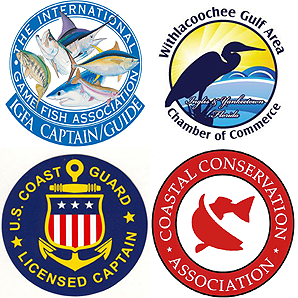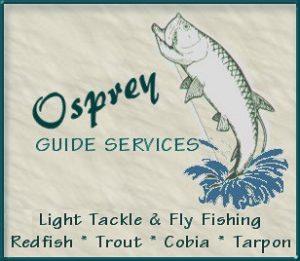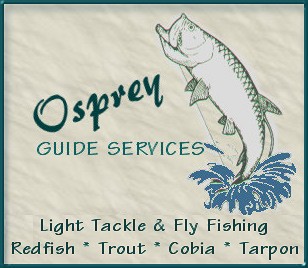Fishing the Gulf Coast of Florida
 Blue Fish
Blue Fish
Bluefish may be caught from boat or shore. Chumming is a helpful, and a wire leader is a must to prevent fish from biting through the line. Anglers use a variety of plugs, sand eel type jigs, and squid- or mackerel-like lures. Pogies, mackerel or eels are good live baits and cut bait works too. Average size is 3-5 pounds. These fish are a bit oily for some people, so gut them and clean them as soon as you legally can.
 Cobia
Cobia
Live crabs and small fish are good baits for cobia. Keep bait near the surface or, if cobia are deeper, add just enough weight to get the bait down and still retain its movement. Medium to heavy tackle is required to land these fish which average 30 pounds. Large specimens in the 50-80 pound class are frequently caught and cherished by the lucky angler who outmatches these powerful fish. Cobia are excellent table fare.
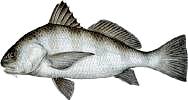 Black Drum
Black Drum
The largest member of the drum family, black drum spawn nearshore in the winter and early spring. They feed on oysters, mussels, crabs, shrimp and occasionally fish. Black drum may live to 35 or more years.
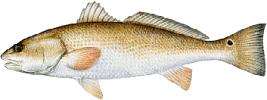 Red Drum
Red Drum
Red drum are one of Florida’s most popular sport fish and the state’s most widespread estuarine fish. Floating a live shrimp under a popping cork is a good way to fish for redfish. They also chase crabs, mullet, pinfish and killifish (mud minnows). Casting soft-bodied jigs, spoons and even top-water plugs will catch the attention of these powerful estuarine musicians. Redfish make great table fare.
 Spotted Sea Trout
Spotted Sea Trout
Free-line live shrimp or small pinfish or pigfish (grunts) near the bottom to entice trout out of grass-bed holes. Attaching a float will allow these baits to drift over the grass beds as you search for trout. Casting with soft-bodied jigs, top-water poppers and spoons can be effective. Trout are very delicate, so returning unwanted or illegal fish promptly to the water is necessary to maintain a healthy population. Spotted seatrout are a good eating fish.
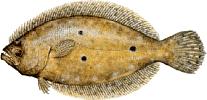 Flounder
Flounder
Bottom fishing with a jig and live or cut bait can be effective; remember these are ambush predators. They can also be taken with a gig in shallow waters, especially at night. Excellent table fare.
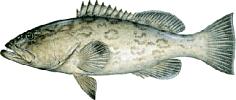 Gag Grouper
Gag Grouper
Grouper fishing from a boat typically involves baits fished near the bottom, with heavy tackle to bring grouper to the surface. Live fish or dead cut or whole bait are used. Grouper are very tasty meals.
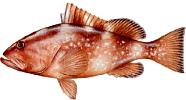 Red Grouper
Red Grouper
Red grouper are a bottom dwelling fish associated with hard bottoms. Juveniles are found offshore along with adults greater than 6 years old. Fish from 1 to 6 years occupy nearshore reefs.
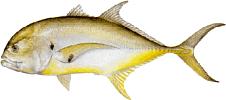 Crevalle Jack
Crevalle Jack
These fish can tolerate a wide range of salinities. Typically, schools will corner a school of baitfish at the surface and feed with commotion that can be seen at great distances. Crevalle jack feed mainly on small fish. Peak spawning occurs offshore from March through September.
 Spanish Mackerel
Spanish Mackerel
Spanish mackerel are a schooling fish that migrates northward in spring, returning to southerly waters when water temperature drops below 70 degrees F. They spawns offshore from spring through summer and feeds on small fish and squid.
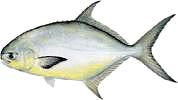 Florida Pompano
Florida Pompano
Florida pompano are common in inshore and nearshore waters, especially along sandy beaches, along oyster banks, and over grassbeds. They are often in turbid water and may be found in water as deep as 130 feet.
 Snook
Snook
They orient themselves to face moving water and wait for prey to be carried down the current. Snook jump clear of the water, and burst into long runs. Use live pinfish, small mullet, shrimp, or sardines free-lined or fished off the bottom with a fish finder rig. They take a large variety of lures based on water conditions. Beware of the snook’s razor-sharp gill covers! Snook make excellent table fare.
 Tarpon
Tarpon
Live shrimp or pinfish make good baits, but plastics and Keys-style streamers work too. When sight fishing, land your presentation softly in front of a tarpon at an angle that lets you withdraw your lure away from the tarpon. Tarpon are not eaten. A tarpon tag is required for harvest.

Rick Lefiles
Owner / Captain
Yankeetown, Fl. 34498
Days to Scallop Season
Day(s)
:
Hour(s)
:
Minute(s)
:
Second(s)
Contact Capt. Rick
